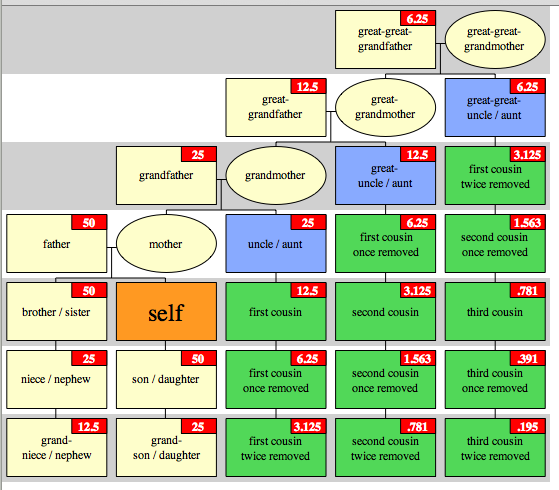How Much DNA Do You Share With Your Blood Relatives?
How much genetic material do you share with your biological relatives? Take a look at the family tree below and the figure in the red box is the percentage of genes your body has in common with your blood relatives. For example, your first cousin has 12.5% of the genes you do (implying, inversely, that 87.5% of their genes are different). Your third cousin twice removed, on the other hand, would have only 0.195% of the same genes, meaning 99.805% of their genes would be different. This assumes, of course, that you have no double relations in your family tree (e.g., sharing a great-great grandmother from two sides of your family tree).
 The chart also ignores relatively rare phenomenon such as the elusive double cousin. These relationships arise when two siblings of one family reproduce with two siblings of another family. This results in the children being related to each other through both parents, and sharing the same grandparents. As a result, double cousins are genetically equal to half-siblings, sharing double the genetic material normally seen in first cousins.
The chart also ignores relatively rare phenomenon such as the elusive double cousin. These relationships arise when two siblings of one family reproduce with two siblings of another family. This results in the children being related to each other through both parents, and sharing the same grandparents. As a result, double cousins are genetically equal to half-siblings, sharing double the genetic material normally seen in first cousins.


